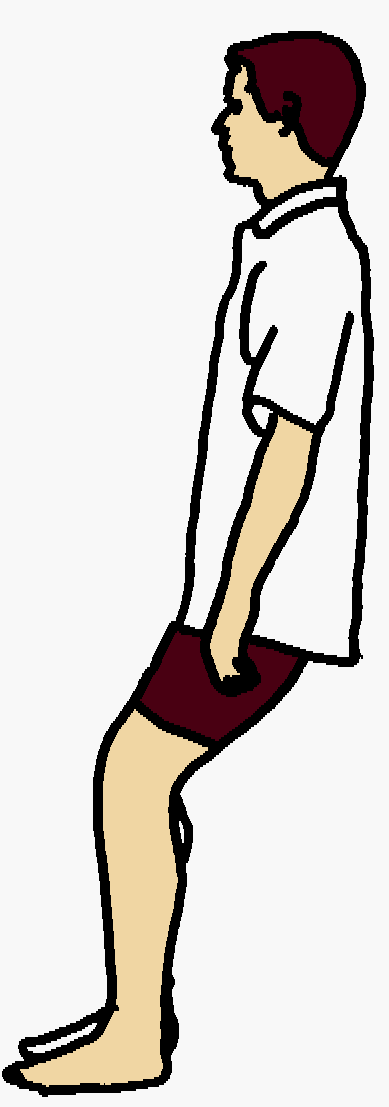|
|
|---|
Wall Slides:- Start Position
- Stand with your back to the wall and your feet about 20 cm from the wall.
Feet hip width apart with their inner sides parallel.
- Lean back onto the wall. Don't force your head to touch
the wall.
- Pelvic neutral with tailbone lengthening down, long spine, scapulas anchored.
- Form your foot arches, and check that your knees are passing over your feet,
not inside of them.
Wall Slides:- Action
- Zip and hollow, and (breathing in), lengthen up through the spine and release the head and neck.
- (Breathing out): Bend your knees and slide about 30 cm down the wall. Make sure that
your knees do not bend to more than 90 degrees. Keep your feet flat on the floor and
your tail bone against the wall.
- (Breathing in): slide back up the wall.
- Repeat 4 to 8 times.
- Come away from the wall and stand upright. Imagine that the wall is still there
against your back. Maintain the scapular anchor and breathe easily. Memorize this
stance! It's good for your back.
(Scroll right>>>>....)
|
Wall slides:
|
Start position

|
Action

|
Comments
- Physiotherapists recommend this exercise for lower back pain, especially for
"Lumbar extension syndrome" and "Lumbar extension with rotation syndrome"(1).
- Alexander and Barlow (Alexander teachers) recommend to keep the knees from pointing inwards(2).
I can personally vouch for this unusual sounding piece of advice!
© Bruce Thomson, EasyVigour Project
scroll up^^^^.....
|
What it does
Teaches healthy movement patterns, that is, the kind of movement patterns that minimize
potential back hip and leg pain.
- Encourages the hips to bend before the lower back when bending forward or down.
- Encourages the hips to straighten before the lower back when coming up from bending down.
- Stops the knees collapsing toward each other and pointing inwards, (i.e. avoids hip medial
rotation syndrome(1)(2)).
Watch Points
- Don't slide down too far!
- Keep the foot arches formed and the knees over the feet, not inside of them!
- Keep the heels on ground and the tail on the wall.
Reference
- Shirley A Sahrmann: Diagnosis and Treatment of Movement Impairment Syndromes;
Publ. Mosby 2002
- Wilfred Barlow: The Alexander Principle; Arrow Books Ltd. Repr. 1987 ISBN 0/09/910160/2
|

